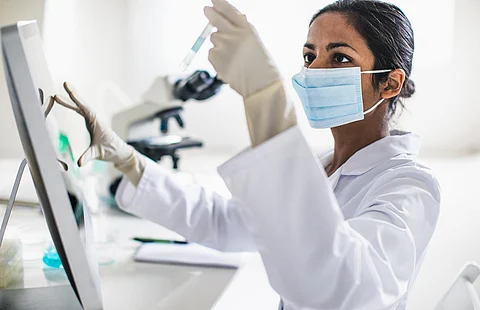

The World Health Assembly has its work cut out as it meets from May 27-June 1, 2024. Even after two years of negotiations, countries have not reached a consensus on the finer details of the pandemic agreement.
The pandemic treaty is a draft meant to guide nations in the event of an unprecedented global health crisis. Speaking to Reuters, the Netherlands-based co-chair of the talks, Roland Driece, did not hold out much hope on a full agreement being reached even now.
He said that it was more likely that the current meeting would lay the grounds for further negotiations and not present a final draft.
The last draft released on May 24 by the Intergovernmental Negotiating Body (INB) had text highlighted in green to signify the areas on which initial agreement was reached and portions marked yellow indicating areas in which some form of convergence was reached.
Plain text indicated areas regarding which no agreement was reached and bracketed text showed issues on which there were divergent views.
Countries initially agreed on Article 12 regarding Pathogen Access and Benefit-Sharing System (PABS). It underscored the importance of promoting the rapid and timely sharing of materials and sequence information on pathogens with pandemic potential. They could not, however, fully accept the suggestion that PABS will be coordinated and convened by the World Health Organization (WHO).
Jean Kaseya, director general of Africa Centers for Disease Control and Prevention, said the continent wants this agreement, the New York Times reported.
PABS is crucial for developing tests, vaccines and treatments rapidly, with African nations wanting equitable access. They also want local companies to manufacture medical products at a cheaper price. Western countries take some of their pathogens without sending them back the benefits, Kesaya added.
INB, which was established in April 2021, held nine meetings and discussed various iterations of a draft text for the next pandemic, which culminated in the outcome document that has now been submitted to the Health Assembly.
A new paragraph was added in the last draft that referred to the United Nations agreements giving nations sovereign rights over their genetic sequence database.
It said:
The countries also failed to agree on drug manufacturers’ terms of distribution to WHO in the event of a public health emergency of international concern.
Through the Global Supply Chain and Logistics Network (GSCL Network), the draft proposed that manufacturers should at least provide 20 per cent of real-time production, no less than 10 per cent of production free of charge and 10 per cent of production at not-for-profit prices to WHO. This remains a bone of contention.
“Non-compliance with the new pandemic agreement risks another COVID-like pandemic, including inequitably distributed economic, social, and health consequences,” Nina Schwalbe of the think tank Spark Street told the news publication The Telegraph.
Experts have warned that the next pandemic’s source will likely be zoonotic. WHO has also recently cautioned that the spread of H5N1 is already a global zoonotic animal pandemic.